
Audiovisual Art Meets Science
KLM’s innovative AV technology and peerless installation quality on a new teaching facility rocketed the company into contention as a finalist in the AVIA awards Education category.

Text:/ Derek Powell
The teaching of science, especially chemistry and biology, has to be a hands-on affair. Practical work and experiments have been an important part of the learning since chemistry became a subject at universities more than 300 years ago. Indeed, many of the great teachers, such as Nobel Prize winner Linus Pauling, reportedly excelled at the art of the lecture-demonstration. However, presenting the correct technique for anything from reactions to dissections can be challenging in front of today’s large classes.
It’s not easy for 150 people to see exactly what’s happening in the bottom of a test tube and just as difficult to hear questions from the back of the room. So when the Australian National University (ANU) set out to build a new science precinct on their Canberra campus, they aimed to cure these problems once and for all.
The result is a spectacular Sciences Teaching Building that is crammed with audiovisual technology, and designed with flexibility and interaction in mind. Unofficially known as “the red building” for obvious reasons, it includes a 150-seat collaborative lecture theatre, a 50-seat theatre and six teaching laboratories, all with extensive distributed presentation systems.
WOW FACTOR
William Keegan, audiovisual service coordinator at ANU, described the 150-seat theatre as “the most amazing room on campus”.
“The first reaction when academics walk in is the ‘wow’ factor,” Keegan said. The room is certainly impressive and not just for its vermillion colour scheme. There are 22 student “pods” each equipped with a 19-inch (48cm) 16:10 NEC display and a plug-in point for student laptops, capable of either VGA or HDMI input.
Audiovisual consultant Simon Umow of Umowlai said his initial briefing for the design from ANU lecturers was quite specific. “They needed quite a bit of flexibility so they could present from a typical lectern position but also from the bench when they are undertaking an experiment,” he explained.
Consequently, the lecturer’s bench was designed as a mobile unit that allowed it to be connected to one of the floor boxes at the front of the room (as in a typical lecture theatre), and to be docked on the side of the room when the academic is demonstrating an experiment. Each location provides complete AV system connectivity and control. A wireless lapel microphone allows the lecturer to move around and get into the best position for an experiment while still being clearly heard by the audience.

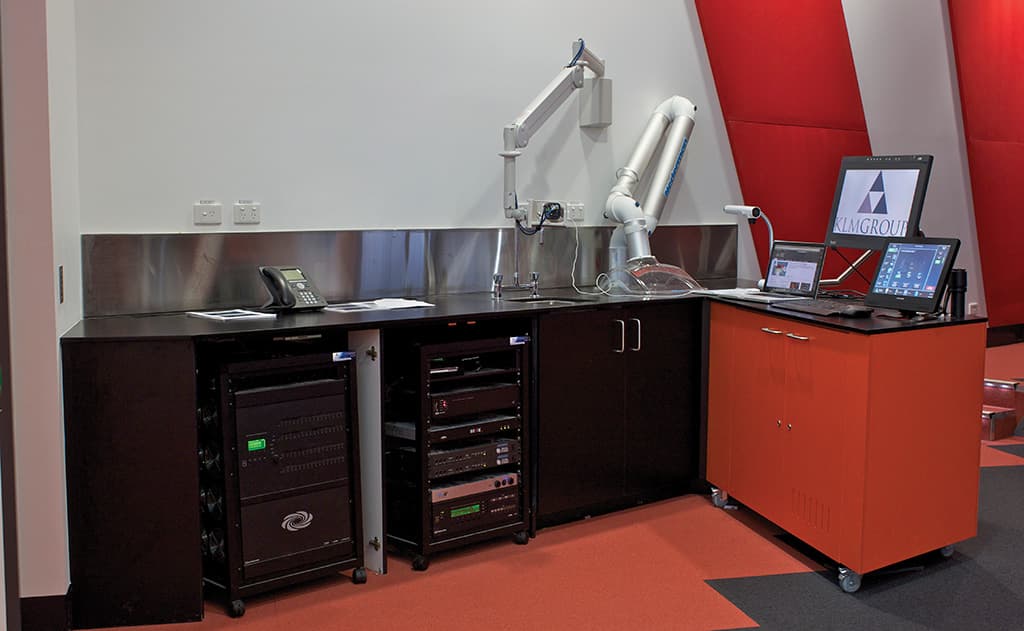
NEWER TECHNOLOGY
When the project was initially designed, analogue distribution was the only viable technology but as construction proceeded, the Crestron Digital Media system emerged as an answer to the special challenges of this space.
“KLM had already won the contract so based on some discussion between ANU, KLM and myself, it was changed to a Digital Media solution,” Umow explained.
KLM subsequently designed and installed a Crestron system, which included a 32×32 Digital Media matrix to support dual format transmitters (VGA and HDMI) for each of the 22 pods as well as PC, laptop, document camera and Blu-ray inputs from the lectern, and a special Sanyo 1080p HDMI camera to provide the crucial close-up view of experiments on the bench.
Umow recalled that there was much discussion before the final camera choice, with remote PTZ control deemed impractical. “Lecturers wanted a fixed [lens] camera on an arm so that they could control it manually – to bring it in closer as required. So the architects came up with a custom designed articulated arm that the camera was installed on,” he said.
There are two 120-inch (305cm) projection screens up front with Mitsubishi HD projectors, and a total of 22 of the NEC monitors. The DM matrix can connect a laptop at each student pod to the local display, or allow it to be projected at the front or shared across all pods. Naturally, any lectern source can be sent to either projector and/or the pod displays.
The theatre is also equipped with ANU’s own Digital Lecture Delivery (DLD) system for lecture recording. DLD uses an Epiphan capture device connected to a Mac Mini and is capable of recording all sources including the experiment camera, and packaging them for delivery to students via a variety of streaming formats. A Smart Podium touch screen allows the lecturer to annotate onto PC sources.
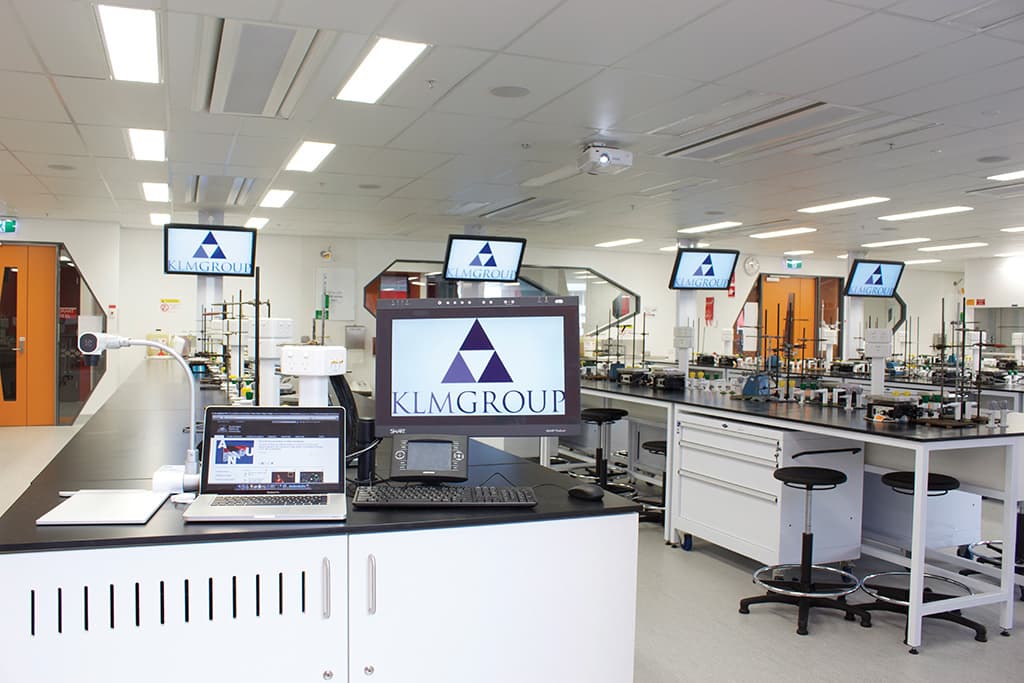
TALKING IN CLASS
Audio has certainly not been forgotten with push-to-talk Shure gooseneck microphones at each student pod to facilitate questions and interaction across the huge teaching space. To avoid feedback and ensure enough gain from each mic, the speakers are zoned so that when a microphone is activated the Nexia DSP system provides a “mixed minus” feed to the adjacent JBL PA speakers. It was, however, something of a last minute inclusion according to Umow. Although ANU wanted student mics from the start, they were cut from the budget then re-included late in the schedule when extra funding became available.
While the microphones are a standout feature of the room, their late inclusion meant the under-bench racks were completely full, with extra DSP and power amps. Heat immediately became an issue, especially for the 32×32 DM matrix, requiring forced air ventilation through the top of the benches. The problem was solved by fitting mesh doors to the front of the racks, allowing free airflow across all components – a handy tip to remember.
Umow professed delight with the overall outcome in the theatre. “The lighting was good, the acoustics of the room were good, as were the sightlines from all the audience members to the lecturer and the screens at the front,” he said. “The screens at the pods didn’t disrupt the sightlines – we prototyped that to ensure that we weren’t causing any obstacles.”
Of course KLM’s work didn’t end there. The smaller 50-seat theatre also received a re-design using a Crestron DM 8×8 video matrix, Crestron touch screen control system and a single 140-inch (356cm) motorised screen with a Mitsubishi projector. Audio duties were again handled using Nexia DSP along with Australian Monitor amps and JBL ceiling speakers. Both theatres had Ampetronics phased array hearing assistance loops installed.
PRACTICAL PROJECTIONS
The third component of the install, six teaching laboratories, are less glamorous but still eminently worthy of mention. Traditionally, ANU chemistry practical sessions started off in a classroom or lecture theatre for the theoretical part of the lesson before moving to the lab – the sightlines across the benches made it impractical to use projection in the labs to explain the concepts. The new spaces allow teaching and experiments to be done in the one place, saving significant time and allowing better use of resources.
Each laboratory has a distributed presentation system with a projection screen at the front supplemented by Mitsubishi 42inch (107cm) LCD displays pole-mounted at the end of each bench. The monitors are set high to allow students a clear view wherever they are in the room, unobstructed by the apparatus on the benches. The larger labs (80-seat and 40-seat) can be joined so a single academic can present to a group of 120 students using linked audio and projection systems.
At the academic’s workstation in the demonstration area there’s a PC (with the Smart Podium for annotation, a feature of many ANU rooms) plus a laptop plug-in, Elmo document camera and DVD player to show pre-recorded demonstrations of technique.
As before, a line-up of Nexia, AM and JBL look after PA and program sound. However, due to budget constraints, these rooms retained the original analogue signal paths with the Crestron control system matched with Extron VGA matrices.
With this project, KLM has demonstrated impressive flexibility, designing and implementing a digital solution part-way through the project as the technology came on-stream. This is truly a case where the integrator’s art met science with remarkable results.
MORE INFORMATION
KLM Group: (02) 6262 3472 or www.klmgroup.com.au
Umow Lai: (03) 9249 0288 or www.umowlai.com.au

EQUIPMENT HIGHLIGHTS
VIDEO
2 x Mitsubishi FL 7000U 1920:1080 full HD projector
2 x Electric Cinema 120-inch motorised screen
18 x NEC LCD 195WXM 19-inch LCD display 16:10
1 x ID422W Smart Touch interactive tablet 1920:1080 wide screen
1 x Sony EVISD1 HD camera
1 x Elmo L1EX document camera
1 x DR 389 LG DVD player/recorder
1 x 32×16 Ultra-wideband matrix switchers
3 x 6-Output wideband RGBHV distribution amplifier
18 x RGBHV input architectural interface
1 x 4-inputvideo and RGB scaler with SDI input and audio switching
1 x 4-output multi-rate SDI mini distribution amplifier
1 x 3×2 VGA and stereo audio matrix switcher
CONTROL
1 x 8XWAPEDKT Isys I/O 8.4-inch wifi wireless touchpanel
1 x AV2ETHKIT AV2 Ethernet kit dual bus control system with C2ENET1”
1 x GLSODTC100 Crestron movement occupancy sensor
2 x AV2-PC AV2-PC power controller
1 x PC node lighting control PC interface
AUDIO
1 x MZH-4040 / ME34 Sennheiser 40cm lectern mic
18 x Control 26 CT JBL ceiling speaker
2 x Control 25 JBL wall speaker
1 x AMIS 250 250W 100V power amp
1 x AV2P AV 2 channel amplifier
1 x NEXIA CS Biamp 10 input, 6 output digital preamp
1 x HDSLX Revolab solo lapel mic/ lanyard wireless system with charger
2 x ILD1000G Ampertronics hearing loop amplifier
MICROPHONE SYSTEM
1 x AUDIAFLEX-CM BIAMP AudiaFLEX – DSP chassis with CobraNet module
11 x AEC-2HD BIAMP AEC2HD acoustic echo cancellation module
21 x SHR-MX400DP desktop base
21 x SHR-MX415LP/S Condenser LoZ 380mm gooseneck supercardioid with light ring
MIX-MINUS SPEAKER SYSTEM
2 x OP2e – AudiaFLEX dual-channel mic/line output card
2 x AudiaEXPO BIAMP 8 channel output expander unit CobraNet
2 x NCA8050 BIAMP 8 channel 50W amplifier with 100V transformers




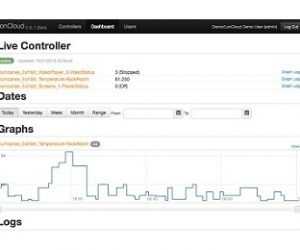
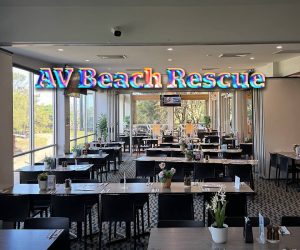
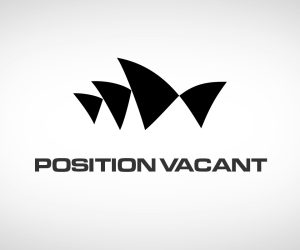

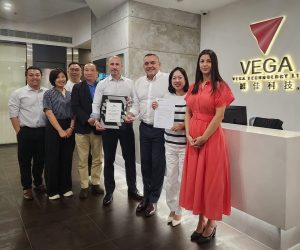

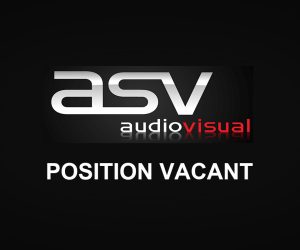
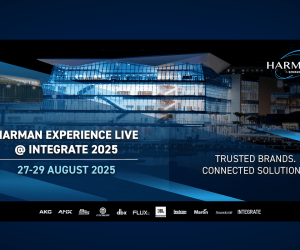


RESPONSES